Prefab Container House Insulation Options: A Comprehensive Guide for Year-Round Comfort and Energy Efficiency
Prefabricated container houses are becoming increasingly popular in modern construction due to their sustainability, cost-effectiveness and modularity. In modern construction, prefabricated container homes are becoming increasingly popular due to their sustainability, cost-effectiveness and modularity. Whether as a residence, commercial space or emergency shelter, they offer unique advantages. However, insulation measures are essential to make containerized houses truly comfortable and livable. In this article, we’ll take an in-depth look at insulation options for prefabricated container homes to help you create a comfortable and energy-efficient living environment year-round.
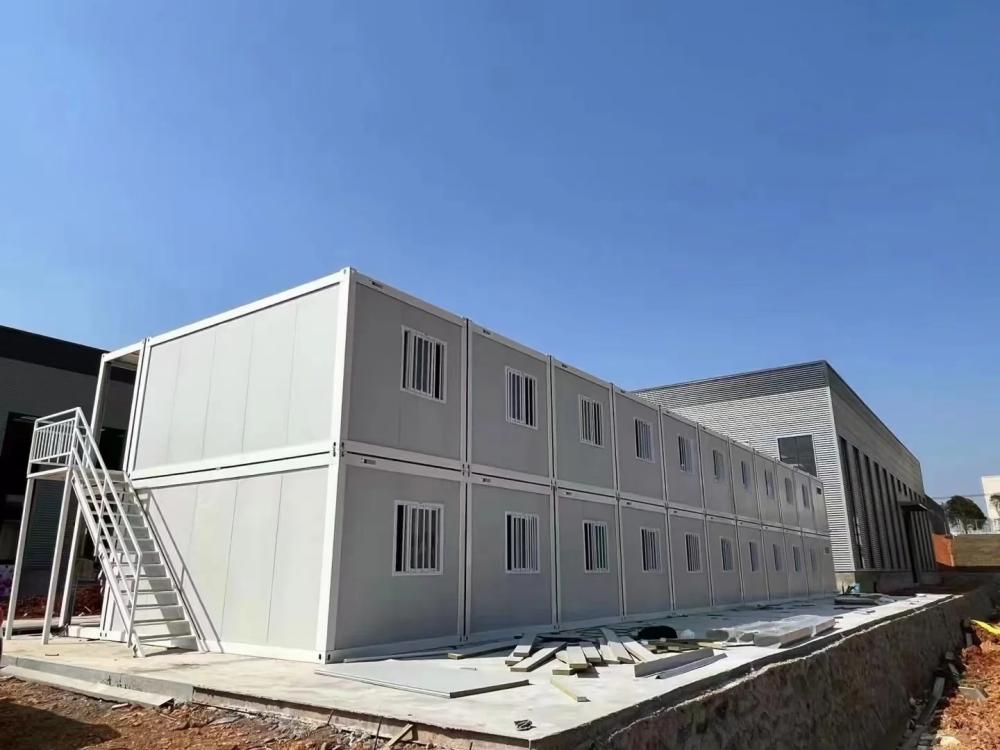
1. Why Is Insulation Critical for Prefab Container Homes?
1.1 Thermal Regulation Challenges
Prefabricated container homes are often constructed of steel, which is an efficient conductor of heat. In the summer, heat from the outside is quickly conducted through the metal walls of the container, making the interior stuffy; while in the winter, heat from the interior is quickly dissipated to the outside, resulting in a cold interior. This rapid transfer of heat not only reduces occupant comfort, but also significantly increases energy consumption.
1.2 Additional Benefits of Insulation
In addition to regulating temperature, insulation has other important roles. The metal walls of a container house are prone to condensation when there is a large difference in temperature, which can lead to mold growth and metal rusting, which can be effectively reduced by good insulation. In addition, insulation can also reduce the incoming noise, creating a quiet indoor environment for the occupants. From the perspective of sustainable development, efficient insulation can reduce energy consumption and carbon emissions, in line with the current trend of environmental protection.
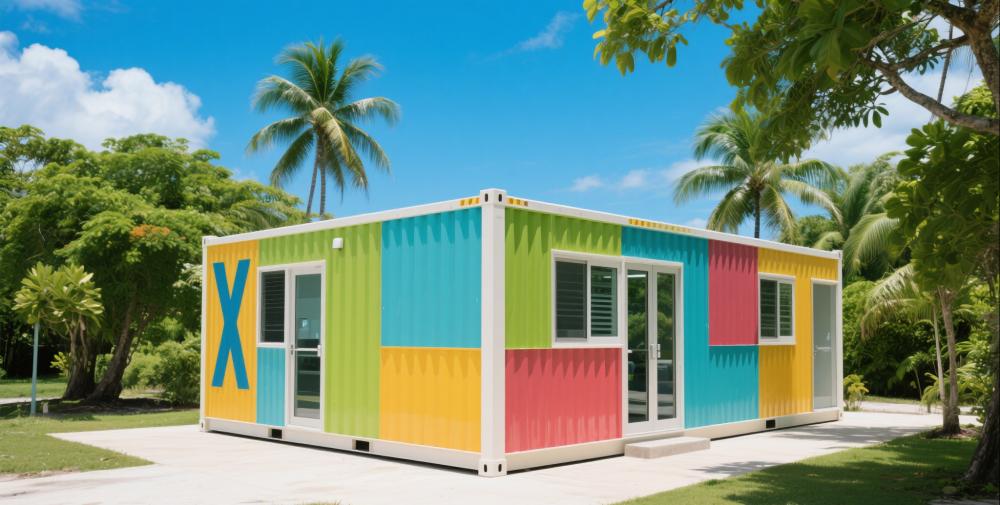
2. TYPES OF INSULATION FOR PREFABRICATED CONTAINER HOUSINGS
2.1 Spray Foam Insulation (Closed-cell and Open-cell)
Spray foam insulation is a very effective insulation option and is categorized into two types: closed-cell and open-cell. Closed-cell spray foam has an extremely high R-value (up to 6.5 per inch), creates an airtight seal that effectively blocks air and moisture intrusion, and adheres well to uneven surfaces. However, it is costly, requires specialized installation, and may have problems with gas evaporation after spraying. It is particularly suitable for off-grid homes and permanent buildings in extreme climatic conditions (-40°C to 40°C).
Open-cell spray foam is relatively low cost and breathable, but has a lower R-value and is less effective as a vapor barrier. It is more suitable for use in mild climates and can balance cost and performance to some extent.
2.2 Rigid Foam Board Insulation (XPS, EPS, Polyisocyanurate)
Rigid Foam Board Insulation includes XPS (Extruded Polystyrene), EPS (Expanded Polystyrene), and Polyisocyanurate, etc. XPS has a high resistance to moisture, and is suitable for both indoor and outdoor installations; EPS is affordable, lightweight, and ideal for DIY installations; and Polyisocyanurate has the highest R-value of any of the rigid foams and is less effective as a vapor barrier. Polyisocyanurate has the highest R-value among rigid foam boards and is fire resistant.
The advantages of these materials are that they are easy to install, space-saving and cost-effective. However, they require careful sealing of gaps during installation, as they do not seal as well as spray foam. Rigid foam board insulation is suitable for use in mild climates, temporary structures and DIY projects.
2.3 Blanket (felt) insulation (fiberglass, mineral wool, wool)
Blanket insulation is commonly made of fiberglass, mineral wool and wool. Fiberglass is inexpensive and widely available, but can irritate the skin and respiratory tract when handled and is less resistant to moisture. Mineral or rock wool is fire resistant, has better moisture resistance than fiberglass, and has a relatively high R-value. Insulation made from wool or cotton is an environmentally friendly choice, with natural mold and mildew resistance, and is allergy-friendly.
The advantage of this type of insulation is that it is affordable and easy to cut to fit into a framed wall installation. However, in humid climates, they need to be used with a vapor barrier or they tend to absorb moisture. Blanket insulation is suitable for use in dry climates, interior framed buildings, and projects with limited budgets.
2.4 Structural insulation panels(sIPs) and pir insulation panels
Structural Insulation Panels (SIPs) are prefabricated panels with insulation sandwiched between them that are highly energy efficient and can withstand a certain amount of weight and are quick to install. However, it is costly and requires precise planning at the design stage.
PIR insulated panels have a polyisocyanurate core and have excellent thermal properties. Both panels are ideally suited for permanent homes, passive house designs, and large container complexes.
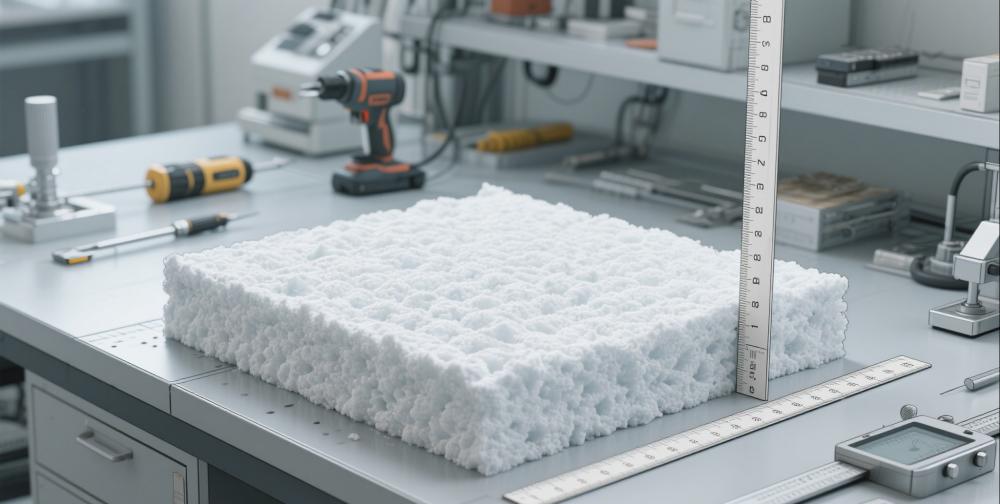
3. internal versus external insulation: which is better for you?
When choosing an insulation method for your prefabricated container house, you need to consider whether to insulate internally or externally. Internal insulation is relatively easy to install, more suitable for DIY operation, and can protect the insulation material from the weather. However, it will take up some interior space and there is a risk of condensation. This is suitable for small buildings, temporary use houses and projects with a limited budget.
External insulation, on the other hand, preserves the full interior space and also prevents the thermal bridging effect, giving the house a more pleasing appearance. However, it is more complicated to install and the insulation is exposed to the weather during installation. As a result, exterior insulation is more suitable for permanent homes and projects where exterior design is a requirement.
4. KEY CONSIDERATIONS WHEN SELECTING INSULATION
4.1 CLIMATE AND REGIONAL REQUIREMENTS
Requirements for insulation materials vary considerably from one climate to another. In cold regions, preference should be given to materials with a high R-value, such as closed cell spray foam or polyisocyanurate, to ensure that there is no significant loss of interior heat. In hot and humid regions, materials with good moisture resistance, such as XPS or closed-cell foam, need to be selected and paired with vapor barriers to prevent moisture buildup. In milder climates, materials such as EPS or open cell foam can be chosen to balance cost and performance.
4.2 R-value and Thermal Resistance
R-value is an important indicator of the thermal insulation performance of an insulating material, the higher the R-value, the better the material’s thermal insulation effect. Different climatic regions have different requirements for the R-value of insulating materials. For example, the R-value of walls is usually between 15 and 30, while roofs require a higher R-value, usually above 30. When selecting insulation, the appropriate R-value should be chosen according to the local climatic conditions.
4.3 Moisture and condensation control
In humid environments, the installation of vapor barriers is a key measure to prevent moisture from building up between the insulation and the metal walls, and can be effective in avoiding mold and corrosion problems. Good ventilation is also vital and can be achieved by installing vents, windows or mechanical ventilation systems that help regulate indoor humidity and maintain air circulation.
4.4 Budget and Installation Complexity
If you have a limited budget and wish to do the installation yourself, you can choose products that are easy to work with like rigid foam board or felt insulation. As for some complex insulations such as spray foam and structural insulated panels, although they have a higher upfront cost, they may save on energy bills in the long run and usually require installation by professionals to ensure quality and effectiveness of the installation.
4.5 Fire Safety and Health Issues
Fire safety is a factor that cannot be ignored when selecting insulation materials. Materials such as mineral wool, polyisocyanurate and cement foam are fire retardant and safer. For occupants with allergies, materials that may cause allergic reactions, such as fiberglass, should be avoided in favor of insulation made of natural fibers, such as wool or cotton.
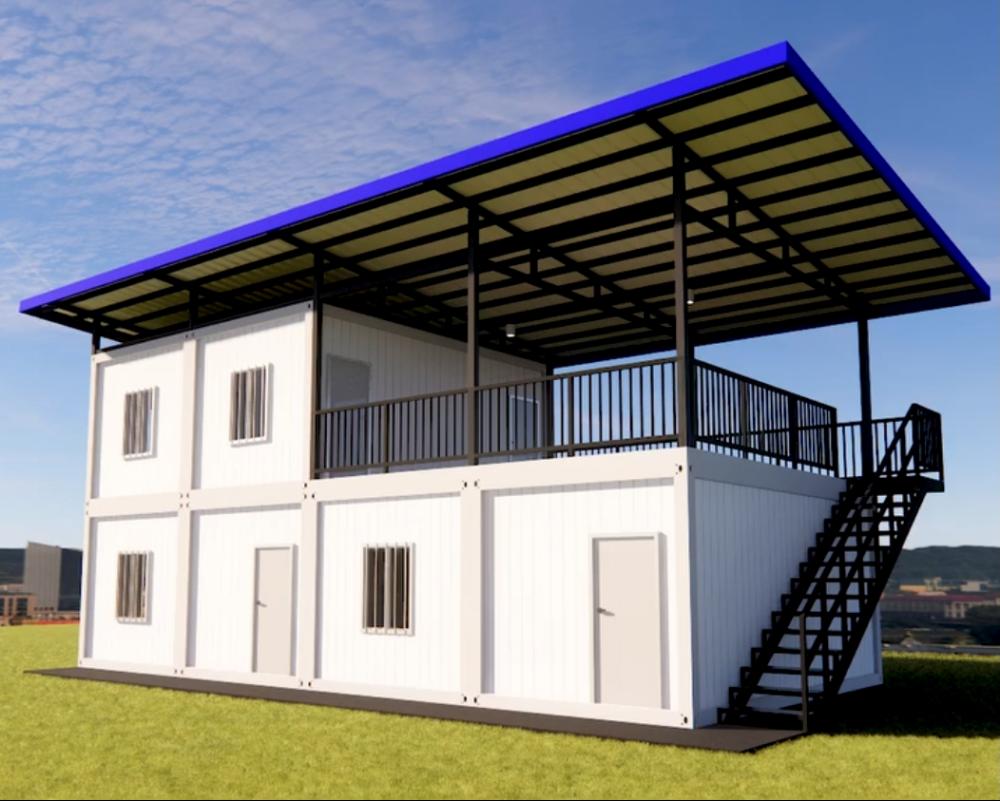
5. HOW TO INSTALL INSULATION IN PREFABRICATED CONTAINER HOUSING: BEST PRACTICES
5.1 PREPARING THE CONTAINER
Before installing the insulation, the container needs to be cleaned and inspected to ensure that there is no rust or corrosion on the surface of the metal walls. At the same time, gaps and holes should be carefully sealed to prevent air infiltration; this step is crucial to improving the insulation.
5.2 Constructing a Multi-Layer System for Maximum Efficiency
An effective insulation system usually consists of multiple layers. A typical structure starts with a metal exterior, followed by a vapor barrier, insulation, and finally an interior covering such as drywall or plywood. This multi-layer structure can work in concert to maximize insulation and moisture resistance.
5.3 Don't Neglect Roof and Floor Insulation
Roofs are exposed to direct sunlight and tend to absorb a lot of heat. Solar heat absorption can be minimized by installing reflective coatings and rigid foam panels. The floor also needs to be insulated. Laying insulation underneath the floor can effectively prevent heat from dissipating through the steel bottom of the container.
5.4 Compliance with building codes and local regulations
When installing insulation, it is important to ensure that local building codes and regulations are met, particularly with regard to fire, moisture and structural safety requirements. This not only ensures the quality and safety of the house, but also avoids possible legal issues at a later stage.
6. CASE STUDIES: INSULATION SOLUTIONS IN THE REAL WORLD
6.1 Extreme Cold Regions: Container Houses in Alaska
In the extreme cold of Alaska, a container house is insulated with closed-cell spray foam, with R-values of 30 for the walls and 40 for the roof, and is equipped with a radiant floor heating system. As a result of these measures, the indoor temperature is maintained at a constant 20°C even when the outdoor temperature is as low as -30°C, with a 50% saving in energy consumption.
6.2 Humid Tropics: Container Offices in the Caribbean
In the Caribbean, where the climate is hot and humid, a container office was constructed using external XPS panels combined with vapour barriers and an optimized ventilation system for good air circulation. This solution effectively reduced the air-conditioning load with no condensation or mold problems.
6.3 Affordable: DIY Weekenders
For DIY enthusiasts on a budget, there is the option of installing rigid foam panels (EPS) and fiberglass batt insulation inside when building a weekender. This configuration can cost as little as $1,500 for a 20-foot shipping container and provides a more comfortable living environment in mild climates.
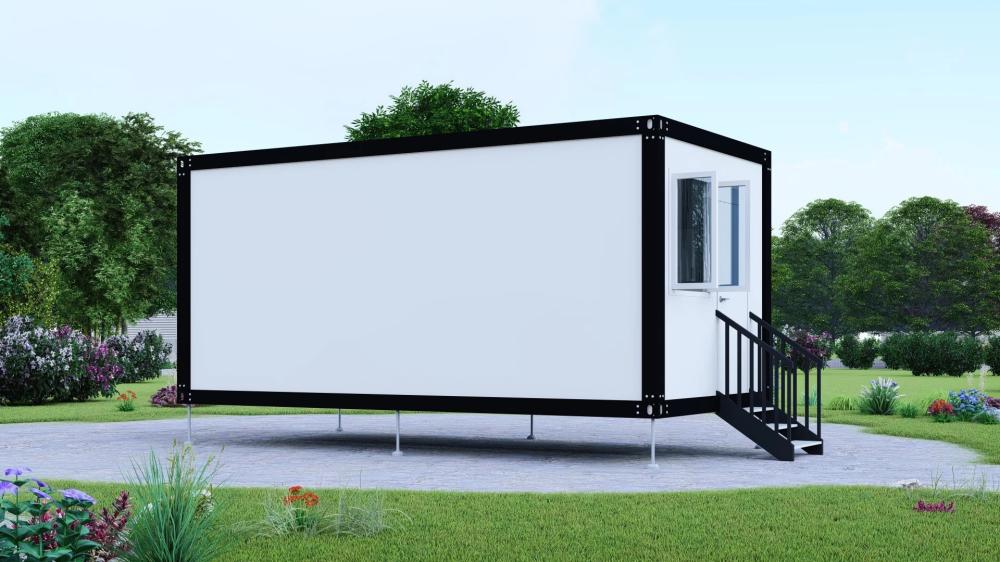
CONCLUSION
Insulation is integral to prefabricated containerized housing and is a key factor in ensuring that the housing is comfortable, energy efficient, and durable. When selecting insulation, various factors such as climate, budget, and design goals need to be considered. For example, for extreme climatic conditions, spray foam insulation with superior performance may be an option; for DIY projects, rigid foam board may be a more appropriate choice.
We hope that this article has given you a better understanding of prefabricated container house insulation. If you have any further questions about container house insulation, feel free to contact us Feekercn Prefab Container House. In practice, it is recommended that you consult local experts for your needs and seek professional installation services if necessary to ensure that your container house has the best possible insulation.
